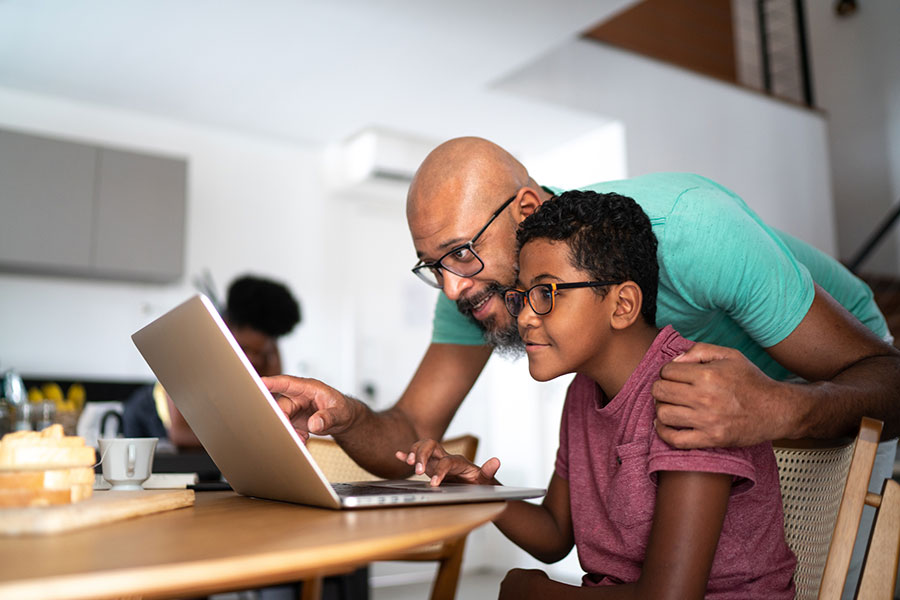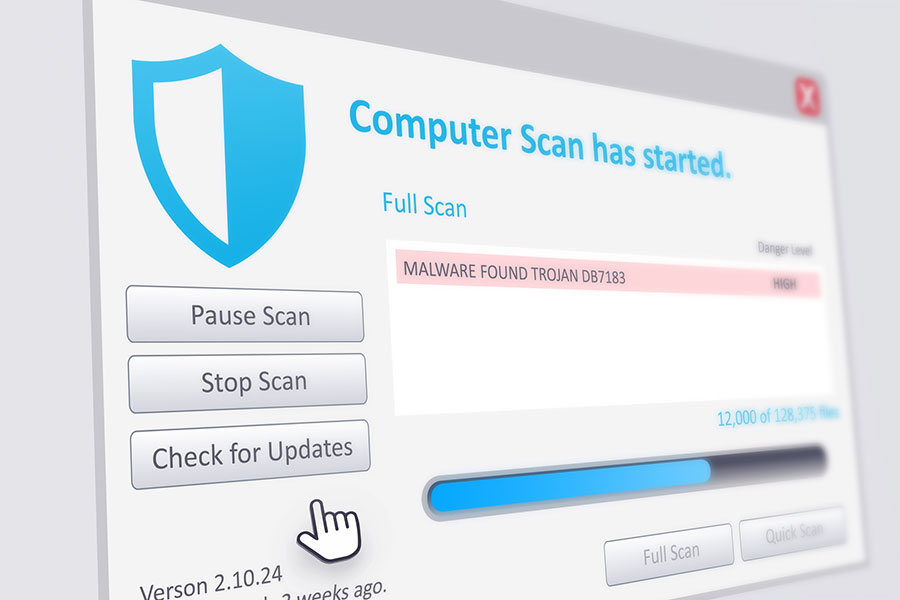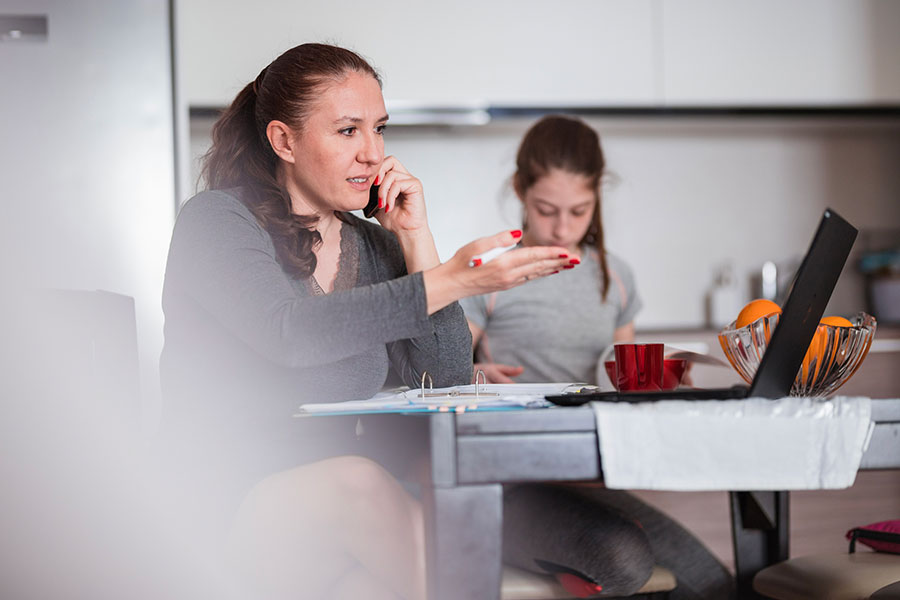Technology is only a small part of the solution
Kids tend to have an innate understanding of how to use technology, particularly the internet. But they can also be, by nature of their youth, innocently naive. Unfortunately, this can make them the target of cyberattacks, online bullies and even predators.
The pandemic – and the increased time kids spend on devices and networks because of lockdowns and virtual learning – only made this worse. In one alarming stat, an organization dedicated to protecting kids on the internet saw an 81% spike in reports of them being sexually exploited online following the onset of COVID-19.
For bad actors looking to take advantage of children through interactions on the web, “opportunities are ever more present now than they were before,” says Cybersecurity program chair John Zabiuk (Computer Systems Technology ’91, Bachelor of Applied Information Systems Technology ’03). As part of the program, Zabiuk teaches human security, which focuses on the psychology behind social engineering.
What’s a parent to do? To start, Zabiuk suggests accepting that the internet is integral to the lives of most kids. In many cases, restricting access may undermine efforts to protect them. “It’s been a forced evolution in the way we communicate,” he says, “and there’s no going back.”
Here are his tips for helping to ensure the safety of children online at a time when they’re most vulnerable.
Talk about the internet

“The most important thing is to have an open dialogue with your kids,” says Zabiuk. “Talk to them about the types of things they do online. You have to show a genuine curiosity about what they’re doing.”
Demanding that they reveal their habits and behaviours will end conversations quickly, as kids will sense a reprimand en route. Similarly, pry into browser histories and “they’re going to hide it from you,” says Zabiuk.
“And as soon as they start hiding things, that’s when the trouble is going to begin.”
Don’t try to keep kids out

It’s possible to lock kids out of worrisome sites by using parental controls on a browser (using tools such as SafeSearch on Google), but this is not Zabiuk’s preferred approach.
“The problem you can run into is if your child finds out that you’re doing that, your trust relationship with them is gone.”
If you ultimately feel that blocking access to certain sites is the best choice, be open about it, says Zabiuk. Explain to kids that it’s for their safety. “It’s good to let your children know that the internet is not always a safe place and there are bad people online.”
Don’t restrict access in secret, he stresses. Kids are smart; they’ll find other ways to access what they want. “The more you try to control them, the less control you’re going to have.”
Monitor if you must

There are more subtle ways to keep tabs on what tabs your kids are opening, says Zabiuk. You can use the technology to monitor itself.
There is no shortage of applications to help parents stay aware of kids’ behaviour online. Bark is one of the top-rated apps, Zabiuk points out, and covers texts, email, social media and websites.
If you do choose to monitor activities, try to use your findings as ways to start the conversations that can lead to positive outcomes for kids and parents alike. Also, be honest about what you’re doing, says Zabiuk, to maintain trust.
“It’s always better to be up front with others – children and adults, alike – when monitoring their actions.”
Use antivirus software

When it comes to kids' safety online, “The last thing we have to worry about is viruses.”
If malware is just a child’s click away, Zabiuk suggests mitigating the risk with a reliable anti-malware software. He uses Bitdefender.
Don’t take security for granted

It’s a given that social media will contain content that’s inappropriate for kids. Even networks designed for children can include troublesome content – and attract creeps.
“It could be these nefarious individuals, bad actors, who are also getting memberships on these social programs,” Zabiuk warns.
The possibility of this happening is still not necessarily a reason to block access as a first step. Instead, it’s an opportunity to talk about how kids can spot trouble, and about how some people might not be using the internet for the same reasons they are, which are to learn, make friends and have fun.
“It can be a hard conversation with kids,” says Zabiuk. But it’s an essential one to have.
Intervene when necessary

The internet isn’t the only thing you might monitor if you’re worried about your children’s relationship with it. “You can look for warning signs from your kids as well,” says Zabiuk.
Watch for devices being pocketed as you enter a room, or laptops being closed. Then loop back to Zabiuk’s first tip, to talk, not chastise.
All this said, there are times when talking isn’t enough. Cyberbullying and online predators can have a lasting negative impact on children’s mental health, says Zabiuk.
Take a quick picture of the screen. Get a username if possible, or examine and collect details on a suspicious profile. “If you do happen to catch [children] talking to somebody you suspect is not who they say they are, you need to call the police right away,” says Zabiuk.
“Don’t even hesitate.”
Banner image FG Trade/istockphoto.com